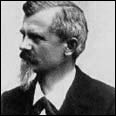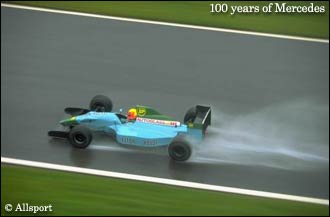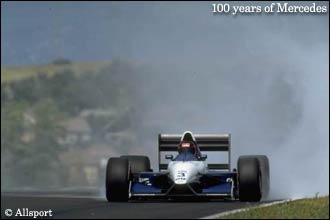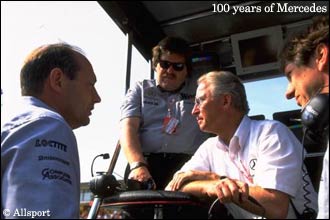|
||||||||
|
|
|||||||
|
to 3 Litres. The result was the FO110x V10 engine. (The Serial Number Code stands for: FO = Formula One; 1 = Mercedes series design; 10 = 10 cylinders; x = the current evolution of the initial design; V10 Configuration.)
The 3 Litre Mercedes-Benz FO110 V10 engine was a completely new engine that was designed to be lighter than the Renault V10, thus allowing better weight distribution. The FO110 V10 engine powered the McLaren MP4/10 for the 1995 season. With Nigel Mansell and Mika Hakkinen as drivers, McLaren were confident of a change of fortune. Unfortunately, the MP4/10 was a pig and Nigel Mansell walked out after 2 races, concluding that McLaren was incapable of solving the problems that stood in the way of success. The MP4/10B and MP4/10C chassis were not significantly better. McLaren-Mercedes finished a distant 4th in the 1995 Constructors' championship with 30 points and 2 podium finishes. This grim season ended with Hakkinen receiving serious injuries during qualification for the Australian Grand Prix at Adelaide. In 1996, the driveability and power of the FO110 V10 engine was improved. This engine was coupled to the McLaren MP4/11. Hakkinen bravely returned and was partnered by ex-Williams driver David Coulthard. This was another difficult season for McLaren-Mercedes, again finishing 4th in the Constructors' championship with 49 points and six podium finishes, with their highest finish being 2nd. |


The Original Benz |
|
|
surely at the Luxembourg Grand Prix, where Hakkinen's and Coulthard's engines both failed, within a lap of each other, while lying 1st and 2nd, in front of DaimlerChrysler's senior management, who were seated in the Nurburgring's Grandstands.
McLaren-Mercedes finished a close 4th in the 1997 Constructors' championship with 63 points. At the same time, Renault Sports announced that they were withdrawing from Formula One at the end of the 1997 season and that Renault-designed engines would continue to be manufactured by Mecachrome. Hence, the door was now open for Ilmor-Mercedes to lead Formula One. In 1998, Ilmor produced the Mercedes-Benz FO110G V10, which was fitted in the Adrian Newey-designed McLaren MP4/13 shod with Bridgestone tyres. The FO110G V10 was about five percent lighter than the previous FO110F V10. At the season-opening race at Melbourne, the McLaren-Mercedes team demolished the opposition, lapping everyone including the once all-conquering Williams-Renault. Mika Hakkinen won the 1998 Drivers' Championships for McLaren-Mercedes. The FO110G V10 would become Ilmor's most successful Formula One engine, winning the Formula One Constructors' championship with 9 Grands Prix wins, 5 one-two finishes and 156 points. In 1999, Ilmor produced the FO110H V10 which was coupled to the McLaren MP4/14. Ilmor-Mercedes faced a greater challenge since Ferrari were closing the performance gap with their 048 engine. Jordan-Mugen Honda also picked off 2 victories and Stewart-Ford were also in the hunt with their new-generation Cosworth CR1 engine. Mika Hakkinen narrowly won the Drivers' championship for the second year in a row, but McLaren-Mercedes had to settle for second in the Constructors' championship with 124 points and 7 Grand Prix wins. |


The Original Daimler |
|
|
Prix wins.
Mercedes announced that they are withdrawing from CART at the end of the 2000 season. Chastened by their failures in 1999 and 2000 seasons, Ilmor-Mercedes have redoubled their efforts to regain the upper hand in Formula One. The FO110K V10 engine was ready early for the 2001 Grand Prix season. Ilmor-Mercedes are likely to face stiff competition in the engine department from Ferrari, BMW, Honda and perhaps Renault and Cosworth in 2001. And, whether Mercedes will be ordered gray wigs for distribution at the 2001 Japanese Grand Prix remains to be seen.... Specification of the 2000 Mercedes-Benz FO110J V10: |


The Original Maybach |
|
| Ewan Tytler | © 1995-2005 Kaizar.Com, Inc. |
| Send comments to: tytler@atlasf1.com | Terms & Conditions |






